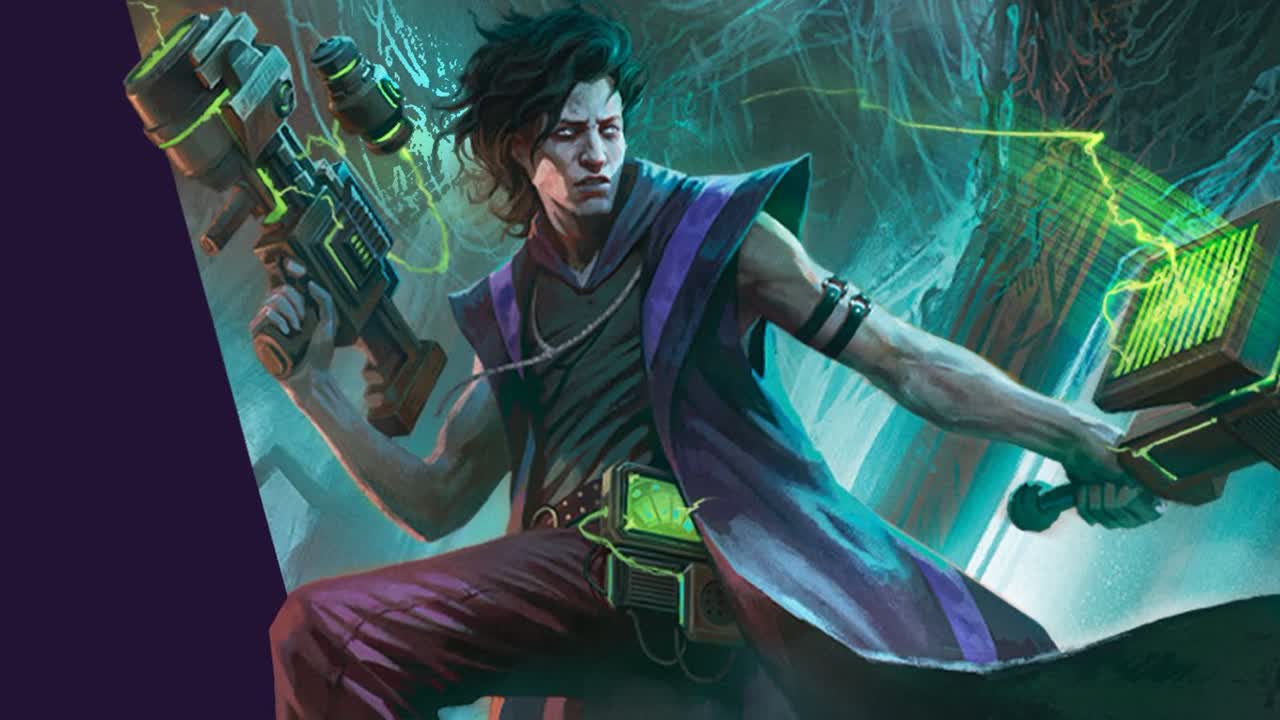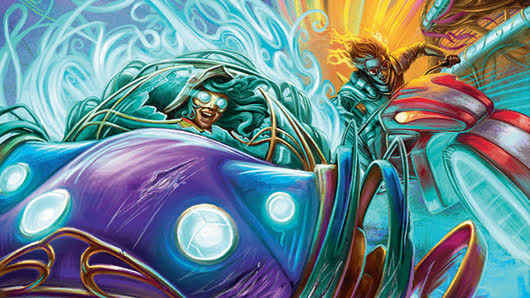Duskmourn: House of Horror was released on September 27th and since then Standard metagame seems to be completely overturned. Many things have changed in these few weeks and the metagame we were used to play after the rotation is now all water under the bridge. In today's article we'll take a look at the very first events held on MTGO after the release of the set to understand how players adapt to the release of a set in the early days.
MTGO Challenge 32 on 27/09/2024
Gruul Aggro by L1X0
In first place we have a well-known deck that has seen its popularity grow considerably after the rotation and release of Bloomburrow Gruul Aggro/ Prowess. This version of the deck contains 3 cards from the last set all played in 4 copies. Specifically we have Thornspire Verge, Leyline of Resonance and Turn Inside Out. The deck's manabase has been improved considerably with this addition and you can finally give up on Thran Portal. Personally I am still skeptical about the addition of the new Leyline. The deck was already very all-in oriented and now with this addition it becomes even more so. Leyline of Resonance is a card that's completely dead to the deck if not in our initial hand. I don't think this archetype needed any more instability as it was already explosive without this addition. Turn Inside Out is a very good addition from my point of view.
Azorius Glyph by Hamuda
In second place we have an old acquaintance as well: Azorius Aggro/Glyph. In this case we find the addition of the double lands released from the last set in 4 copies (Floodfarm Verge) and we also find Splitskin Doll, Sheltered by Ghosts and Unidentified Hovership. While the two artifacts are good but not too relevant additions, on the other hand the addition of Sheltered by Ghosts can greatly improve the strength of the deck. From my point of view this spell has managed to impose itself in the standard right away thanks to its very modest cost and the fact that it gives Ward 2 to the enchanted creature. Obviously the main reason for using it is to exile a creature but without the other I think we would have hardly seen it played.
5 Color Legends by guiyote
In third place we have a deck where there are completely absent cards from the new set. The archetype is well known to us even if after the rotation it lost its combo. The deck is definitely very fun but I think it’s far away, in terms of power level, from the pre-rotation version.
Mardu Aggro by wcl
In fourth place we have an aggro mardu that differs (lands excluded) Historic Brawl only for 8 cards from monored. In this case Historic as well we have a very all-in version of the deck thanks to the inclusion of Leyline of Resonance. Four copies of Turn Inside Out and a surprising copy of Shardmage's Rescue are included in the maindeck and another 3 in the sideboard of the deck. This card, unlike the other two already mentioned, is intended to protect our threats. The main function of the card will be to give Hexproof to our creature. Overall I think the manabase of this deck is too fragile and that the gruul or monored version of the deck may have less problems.
MTGO Challenge 32 on 28/09/2024
Azorius Tempo by Makoobi
In first place we have another deck now well known for months: Azorius Tempo. 4 Color Control The additions are also in this case few: Floodfarm Verge in three copies and Abhorrent Oculus in four copies. If the inclusion of land was almost automatic, that of Abhorrent Oculus was not so obvious. In fact, Oculus has replaced Monastery Mentor, a fundamental card for the deck until the release of Duskmourn: House of Horror. Being able to exile 6 cards from the graveyard, so that you can cast this flying giant, is very easy for the deck. On the other hand, paying this price can greatly reduce the strength of Naughty Djinn during the game. It is also true that the value created by Abhorrent Oculus in a couple of turns should be enough to overcome this problem. Also, we can often not pay this cost and just rereanimate our one-eyed friend from the cemetery thanks to the many reanimating spells in the deck.
4 Color Control by LukasDusek2
Once again we are talking about an archetype that has been played for a long time in the Standard metagame. In this case the inclusions are two but from my point of view much more relevant than those seen so far: Overlord of the Hauntwoods and Overlord of the Mistmoors. The first one playes a similar role then the one played by Topiary Stomper before rotation: it performs a very similar function in the same turn if casted for its Impending cost. The card is much stronger than its predecessor from my point of view for several reasons: we can cast it for 5 mana as well with a much better body; continues to generate tapped colorless land tokens by attacking; it's an enchantment spell and therefore synergizes with Zur, Eternal Schemer. His mate Overlord of the Mistmoors is an absolute novelty for the archetype: the chance to generate two tokens already from turn four (or even earlier if we successfully ramp), accompanied by the chance to cast the creature directly for seven mana makes the inclusion in the deck very relevant. On the one hand the card provides us with blockers and on the other hand it can represent one of our winning conditions in late game. In general, the impending mechanics is very useful in this archetype thanks to its flexibility.
Azorius Enchantments by Sapoa
This is a completely new archetype for the recent standard and Ajani, Nacatl Pariah to talk about the new inclusions would be senseless and reductive precisely because the entire archetype was born after the release of the set. It's still very interesting to see how soon after the release a new archetype was created from scratch. In fact 32/38 of the non-land cards on the maindeck belong to Duskmourn: House of Horror. The archetype is definitely worth exploring in more depth as it could be a good alternative to the other versions of Azorius presented in this article.
Boros Aggro by bless_von
In fourth place we have a Boros Aggro that moves away from the Monored version thanks to the inclusion of 14 cards from the last set. Almost all new inclusions are enchantments and the only exception is Optimistic Scavenger (a card that greatly benefits from the inclusion of so many enchantments). Other additions include Shardmage's Rescue, Sheltered by Ghosts and Painter's Studio. This room performs a very important function for the deck as it can be used both to attack and to create value. In an aggressive archetype like this it becomes very relevant to have the chance of choosing the right sequence of activation of the two rooms based on the moment of the match and the matchup we face. Although the flexibility of the card is very interesting, I am a little skeptical about the real usefulness of it in such an aggressive archetype.
Conclusions
The first days after a new set is released are always very special in terms of deckbuilding and often what happens is that people take already working archetypes and decide to make some additions in order to improve them. We rarely see immediate results from completely new decks like in the case of Azorius Enchantments. Obviously in the following weeks much has changed and it might be very interesting to see how. Maybe in a future article?







